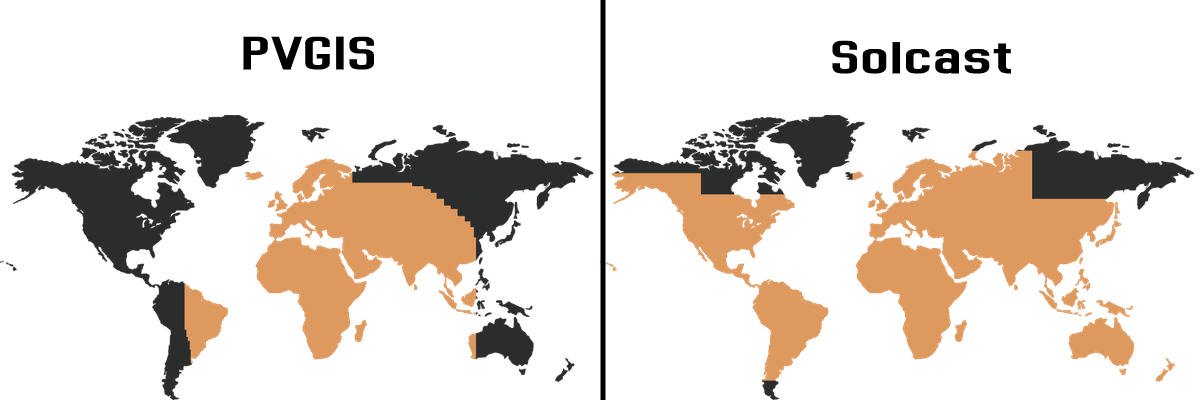Bankable solar resource and weather data
Solcast is independently validated as the lowest uncertainty solar resource dataset
Compared with PVGIS, Solcast has lower uncertainty, global coverage, is faster to access, and is easier to use.
Improve your yield model accuracy and get project financing approved faster with the industry-leading solar and TMY dataset.
We provide free and open access to researchers.

We've prepared an in-depth comparison using published statistics from Solcast and PVGIS.
Our goal is to make your work easier. We want to make it easy for you to understand how we compare.
| Solcast | PVGIS | |
|---|---|---|
| Mean Bias Error | 0.00% | 0.70% |
| Std. Deviation | 2.00% | 3.20% |
| Resolution | 1-2km | 2-5km |
| RMSE | 16.50% | Not published |
Solcast data is built using industry-leading satellite to solar irradiance models, including tracking the impact of aerosols and detailed cloud modelling algorithms
We built an entirely new approach to solar irradiance modelling using the latest in high-resolution weather satellites, machine learning, computer vision and big data. The resulting level of detail flows into our historical dataset and TMY, producing the most accurate solar resource dataset every created, and fully capturing the impacts of interannual variability at high-resolution.
- Bankable, trusted, accurate
- Lowest uncertainty available, zero bias
- Global coverage (all six major continents)
- Independent validation
- Flexible pricing
- Volume discounts for heavy users
- Free for researchers
- 1-2km spatial resolution
- 1/5/10/15/30/60 temporal resolution
- Compatible with PVSyst, SAM, HOMER, and more
- P50, P75, P90, P95, PXX scenarios
- Includes aerosol impacts (tracking of smoke, dust, haze)
- Consulting
Solcast provides global coverage of historical solar datasets

Renewables Product Manager
CEO & Founder